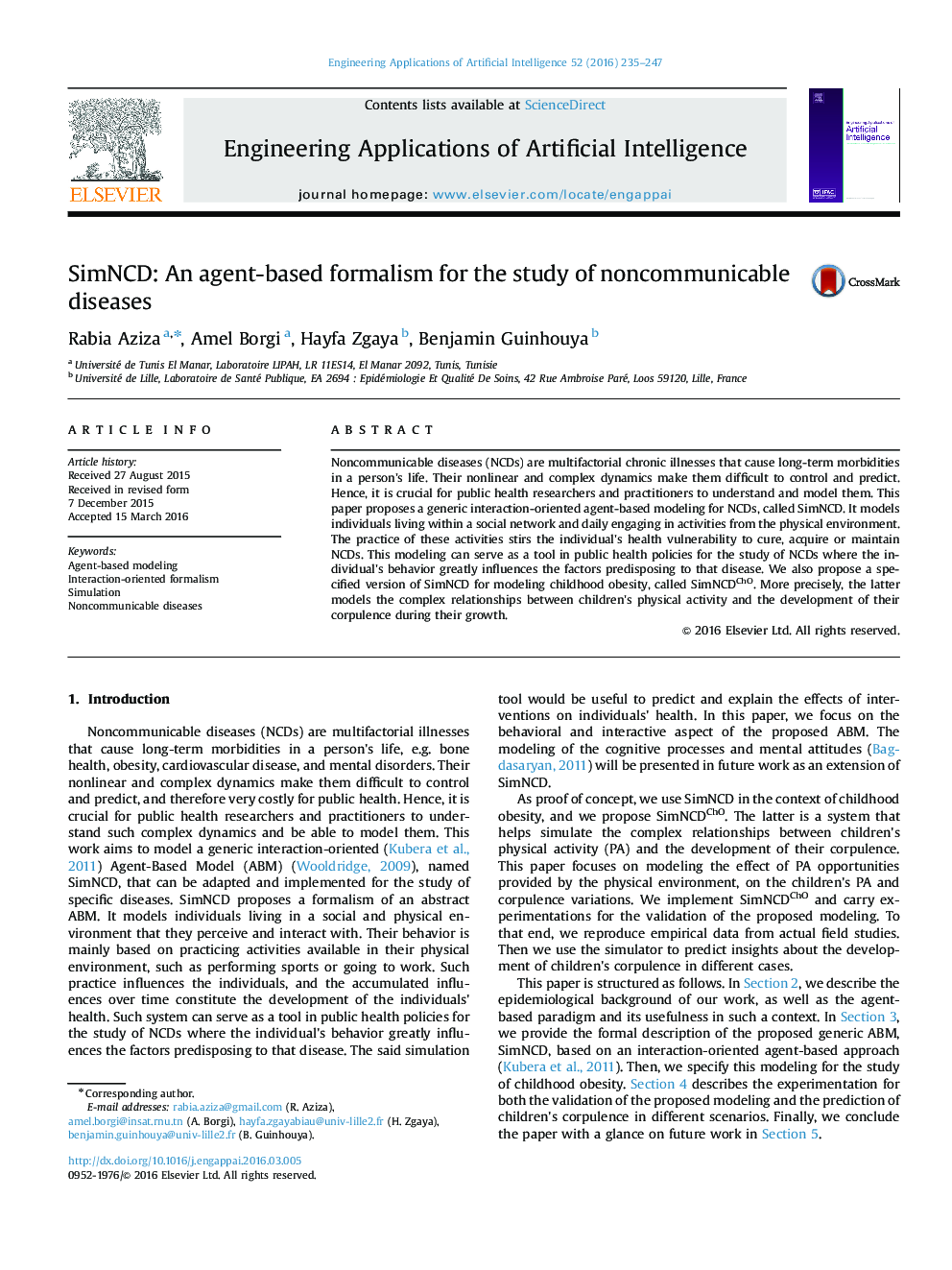| Article ID | Journal | Published Year | Pages | File Type |
|---|---|---|---|---|
| 380207 | Engineering Applications of Artificial Intelligence | 2016 | 13 Pages |
•An agent-based formalism for modeling noncommunicable diseases.•The research uses an interaction-oriented multi-agent formalism and methodology.•The modeling can serve as a tool in public health policies.•Provides detailed data about the health risk factors of the simulated case study.•Includes a case study on infantile obesity.
Noncommunicable diseases (NCDs) are multifactorial chronic illnesses that cause long-term morbidities in a person's life. Their nonlinear and complex dynamics make them difficult to control and predict. Hence, it is crucial for public health researchers and practitioners to understand and model them. This paper proposes a generic interaction-oriented agent-based modeling for NCDs, called SimNCD. It models individuals living within a social network and daily engaging in activities from the physical environment. The practice of these activities stirs the individual's health vulnerability to cure, acquire or maintain NCDs. This modeling can serve as a tool in public health policies for the study of NCDs where the individual's behavior greatly influences the factors predisposing to that disease. We also propose a specified version of SimNCD for modeling childhood obesity, called SimNCDChO. More precisely, the latter models the complex relationships between children's physical activity and the development of their corpulence during their growth.
